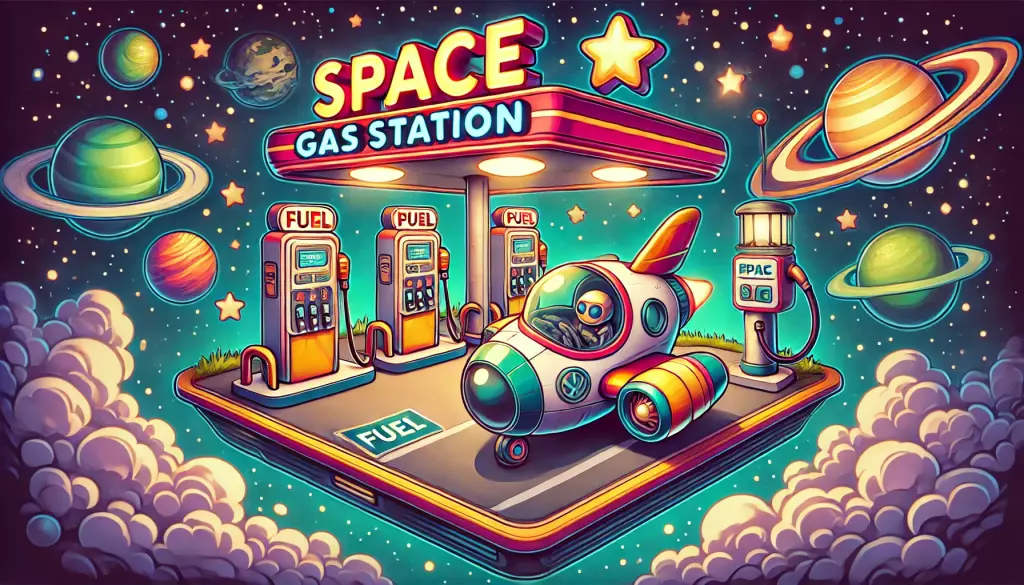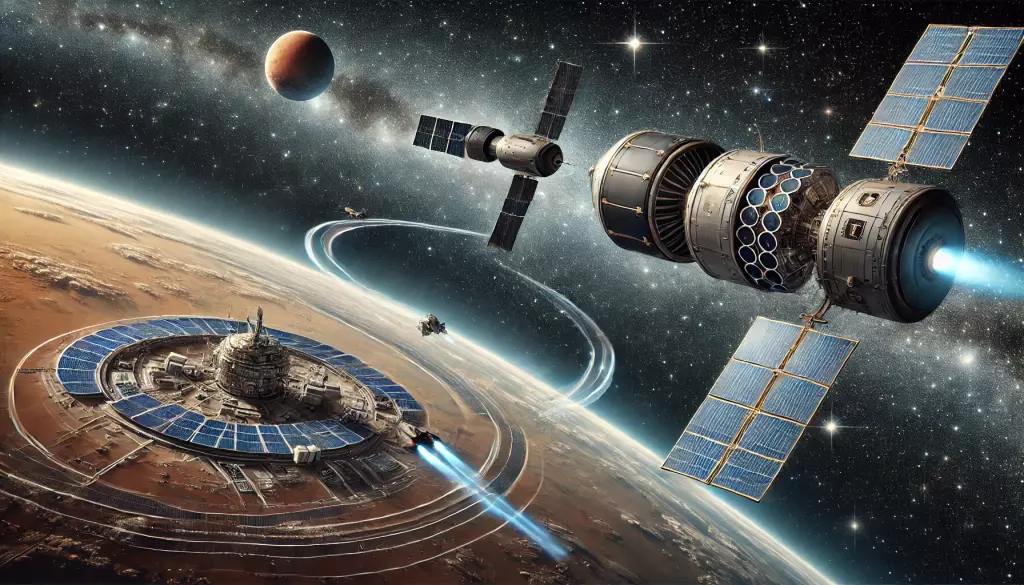Fighter pilots don’t refuel their aircraft on the ground during long missions – they do that in the sky! Well, why don’t we mount a mission to Mars with this exact form of spacecraft refueling?
Traveling to Mars is one of the most challenging and ambitious goals in modern space exploration. The journey to Mars typically takes around six to nine months using current propulsion technologies.
Reducing this travel time is crucial for minimizing the risks associated with long-duration space travel, such as exposure to cosmic radiation and the psychological toll on astronauts. The TV show, The Expanse, does a more scientifically radical form of journey to Mars (do we have to wait for this futuristic method) of 1G acceleration.
Challenges of Accelerating to Mars: By using gas stations in space

Our potential solution is to accelerate the spacecraft by strategically placing refueling stations along the flight path, allowing for continuous or intermittent propulsion boosts. You can drive across America in just days without hauling all your journey’s fuel in your car.
Let’s further breakdown the scientific, technological, and financial challenges of implementing such a strategy.
5. Propulsion Systems:
The primary challenge in accelerating a spacecraft to Mars is the propulsion system. Traditional chemical rockets are limited by the amount of fuel they can carry, which directly impacts their ability to increase speed over long distances.
To achieve higher speeds, advanced propulsion systems such as ion thrusters or nuclear thermal propulsion could be used. However, these systems require substantial power and fuel, necessitating frequent refueling stops if continuous acceleration is desired.
4. Refueling Station Placement:
Strategically placing refueling stations along the spacecraft’s trajectory requires precise calculations of the orbital mechanics involved. The stations would need to be positioned at points where they can be easily reached by the spacecraft while minimizing the amount of extra energy needed to reach them.
This placement is complicated by the fact that both Earth and Mars are in constant motion, requiring a dynamic understanding of their respective orbits and the spacecraft’s path.
3. Construction and Maintenance of Refueling Stations:
Building and maintaining refueling stations in space is an immense technological challenge. Each station would need to be launched, assembled, and maintained in orbit, possibly requiring robotic systems or human crews for construction. Additionally, the stations would need to be self-sustaining, with the ability to generate or store fuel, such as liquid hydrogen and oxygen or other propellants like xenon for ion drives.
2. Cost Considerations:
The financial cost of deploying multiple refueling stations along a Mars-bound trajectory is astronomical. Such cost includes the research and development of advanced propulsion technologies, the construction and launch of the stations, and their ongoing maintenance.
Each station could easily cost billions of dollars, not including the cost of the spacecraft itself. Additionally, launching these stations would require multiple heavy-lift rockets, each with its own substantial price tag.
1. Technological Complexity:
The technology required to implement this strategy is complex and not yet fully developed. Advanced propulsion systems like nuclear thermal or electric propulsion are still in the experimental stages.
Additionally, the refueling process itself would need to be highly reliable, as any failure could result in catastrophic mission failure. The spacecraft would need to autonomously dock with the stations, refuel, and then continue its journey, all without human intervention.
Gas stations in space: How we will reap the benefits

By building the highway systems and fueling stops across the US, the Americans were able to leapfrog other far more mature nations in the world. They didn’t wait for the inventions of the internet and maglev trains to open up their expansive west.
Why stop at Mars? Building refueling stations in space would greatly benefit humanity in the following ways:
4. Orbital Mechanics and Trajectory Optimization:
The key to success in this mission would be optimizing the spacecraft’s trajectory using advanced simulations. This would involve precise calculations of gravitational assists, orbital insertion points, and the timing of propulsion burns to minimize fuel usage and maximize speed.
3. In-Situ Resource Utilization (ISRU):
One way to reduce the need for carrying all the fuel from Earth is to use In-Situ Resource Utilization (ISRU) techniques to produce fuel at the refueling stations.
For example, water ice found on asteroids or Martian moons could be converted into hydrogen and oxygen for rocket fuel. This would significantly reduce the amount of material that needs to be launched from Earth.
2. Advanced Automation and AI:
The entire system would need to be highly automated, with artificial intelligence (AI) managing the docking, refueling, and trajectory adjustments. The AI would need to be capable of making real-time decisions to account for any unexpected events, such as system malfunctions or debris collisions.
1. Robust Redundancy and Safety Measures:
To ensure mission success, each refueling station and the spacecraft itself would need to have multiple redundant systems.
This would include backup propulsion systems, fuel supplies, and communication links to Earth. The stations would also need to be equipped with collision avoidance systems to protect against space debris.
Conclusion
Accelerating a spacecraft to Mars by placing refueling stations along the flight path is a scientifically feasible but incredibly challenging endeavor. But, if we create such an infrastructure now, we could keep using it until other technologically better and cheaper alternatives comes around.
The technological and financial hurdles are significant, and the success of such a mission would depend on advancements in propulsion technology, orbital mechanics, and autonomous systems. While the concept holds promise for reducing travel time to Mars, it remains a long-term goal that will require considerable investment and innovation.



